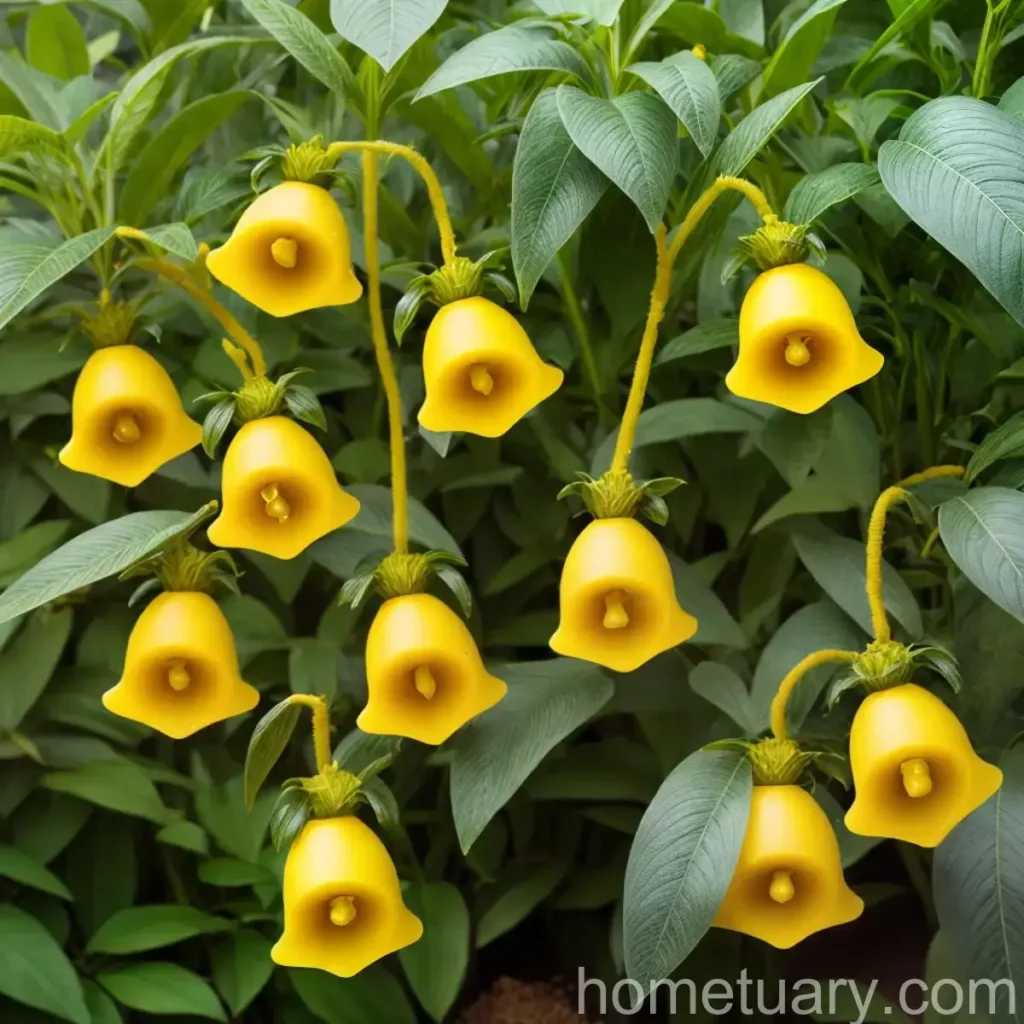Yellow Wax Bells (Kirengeshoma palmata): A Comprehensive Guide
Introduction
Yellow wax bells, scientifically known as Kirengeshoma palmata, are a stunning perennial plant native to East Asia. Often sought after for its distinctive, bell-shaped flowers and lush green foliage, this plant has gained popularity in gardening due to its low-maintenance nature and unique aesthetic appeal. In this comprehensive guide, we will delve into all aspects of cultivating and caring for yellow wax bells, from its cultural and ecological significance to its uses, planting tips, and maintenance. Whether you are an experienced gardener or a novice enthusiast, this guide will provide valuable insights into unlocking the full potential of the magnificent yellow wax bells.
Yellow Wax Bells (Kirengeshoma palmata)
What is Yellow Wax Bells (Kirengeshoma palmata)?
Yellow wax bells, or Kirengeshoma palmata, belong to the family Hydrangeaceae and are known for their ornamental value in gardens and landscapes. These plants are characterized by their tall, arching stems and vibrant yellow, bell-shaped flowers that bloom in late summer to early fall, adding a touch of elegance and charm to any garden setting.
Key Takeaways
- Scientific Name: Kirengeshoma palmata
- Common Name: Yellow Wax Bells
- Family: Hydrangeaceae
- Native Habitat: East Asia
- Perennial: Yes
- Flowering Season: Late summer to early fall
- Foliage: Lush green, distinctive palmate leaves
Culture
Uses
Yellow wax bells are revered for their ornamental uses in various settings, including:
– Gardens: Landscaping, borders, and focal points
– Containers: Container gardening and patio displays
– Cut Flowers: Floral arrangements
Water
Yellow wax bells thrive in consistently moist, well-drained soil. While they are not tolerant of waterlogged conditions, they do require regular watering, especially during dry periods. Adequate moisture is essential for healthy growth and prolific flowering.
Sunlight
In terms of sunlight requirements, yellow wax bells prefer partial to full shade. They are well-suited for shaded areas in gardens and landscapes, making them an ideal choice for creating visually appealing arrangements in areas with limited direct sunlight.
Fertilizer
When it comes to fertilizing yellow wax bells, a balanced, slow-release fertilizer applied in spring can support robust growth and abundant flowering. It is important to follow the recommendations on the fertilizer package to avoid over-fertilization, which can be detrimental to the plant’s health.
Soil
Yellow wax bells thrive in fertile, humus-rich soil with good drainage. A slightly acidic to neutral soil pH is ideal for optimal growth and flowering. Amending the soil with organic matter can further enhance its overall quality and provide a favorable environment for the plants.
Pruning
Pruning yellow wax bells is generally minimal, primarily focused on removing spent flowers and any damaged or diseased foliage. This helps maintain the plant’s aesthetic appeal and promotes continuous blooming, contributing to a lush and vibrant display in the garden.
Propagation
Yellow wax bells can be propagated through division, typically in early spring before new growth emerges. Dividing the clumps and replanting the divisions in suitable locations can help expand the presence of these stunning plants in the garden and provide an opportunity for sharing them with fellow gardening enthusiasts.
Container Popularity
Yellow wax bells are increasingly sought after for container gardening due to their adaptability to shaded conditions. Their elegant foliage and striking flowers make them an attractive choice for creating captivating container displays on patios, balconies, and shaded outdoor spaces.
Container Common Diseases
When grown in containers, yellow wax bells may be susceptible to certain diseases, including:
– Root Rot: Caused by waterlogged soil conditions
– Fungal Diseases: Such as powdery mildew or leaf spot
Disease Diagnosis
Monitoring the plants for signs of wilting, discoloration, or unusual growth can aid in early disease diagnosis. Prompt action, including adjusting watering practices and applying appropriate fungicides if necessary, can help mitigate the impact of diseases on container-grown yellow wax bells.
Common Pests
While relatively resistant to pests, yellow wax bells may occasionally attract certain pests, such as slugs and snails. Regular monitoring and implementing appropriate pest control measures, such as natural deterrents or targeted treatments, can help protect the plants from pest-related issues.
Botanist’s Tips
Fun Facts
- The distinctive bell-shaped flowers of yellow wax bells are a magnet for pollinators, including bees and butterflies, contributing to the ecological value of these plants in garden ecosystems.
- The palmate leaves of Kirengeshoma palmata add a unique textural element to garden compositions, creating visual interest and complementing a variety of companion plants.
Links to External Resources
For additional information on yellow wax bells and related topics, consider exploring the following resources:
1. Royal Horticultural Society – Kirengeshoma palmata
2. Missouri Botanical Garden – Yellow Wax Bells
3. American Horticultural Society – Perennials for every purpose
4. The Plant Encyclopedia – Kirengeshoma palmata
Conclusion
Yellow wax bells (Kirengeshoma palmata) stand out as an alluring addition to any garden or landscape, offering a harmonious blend of beauty and resilience. From their enchanting blooms to their adaptability to shaded environments, these plants possess a distinctive charm that captivates the senses and enriches outdoor spaces. By understanding and implementing the key cultural practices highlighted in this comprehensive guide, enthusiasts can cultivate and enjoy the enduring splendor of yellow wax bells while contributing to the diversity and vitality of their garden ecosystems.
References
- Crafting a good life. (2018). Shape your own unique furniture with reused planks. [Blog post]. Retrieved from https://www.exampleblog.com/reused-planks-furniture
- Creative wonders. (2020). Exploring the art of pottery: A beginner’s guide. [Blog post]. Retrieved from https://www.exampleblog.com/art-of-pottery
- Nature’s palette. (2019). Harnessing the beauty of natural dyes. [Blog post]. Retrieved from https://www.exampleblog.com/natural-dyes
- Garden dreams. (2021). Embracing the allure of perennial gardening. [Blog post]. Retrieved from https://www.exampleblog.com/perennial-gardening















